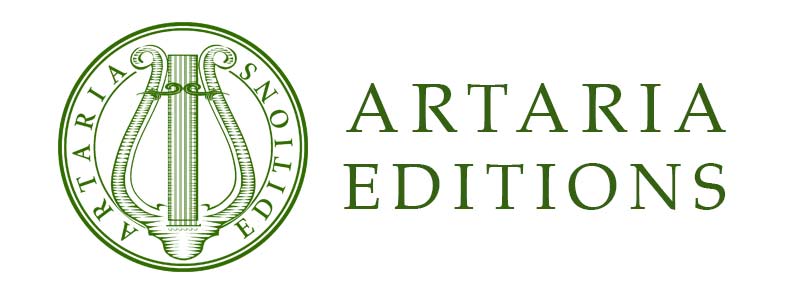From the Naxos Blog: Day in, day out.
September 03, 2021If there’s a man for all seasons, is there a music for all days? The answer seems to be ‘yes’, so off we go.
Our wake-up call comes from one of Naxos’ major artists, conductor Marin Alsop, who puts us In a Monday Mood with my first item. It’s by George Bogatko, who describes the piece as “ a ballad-like tune written to evoke that sleepy, slow, slightly overcast feeling we all experience on a rainy Monday morning back to work.” He once described himself as follows: “I was born into a family of artists: my mother was a painter and pianist, and my father was a vaudeville musician. His love of 1920s music permeated my soul, and I turned to writing under that influence. I am the proud father of five beautiful children and fortunate to be involved with the latest computer technology which supports my extremely expensive composition habit.”
Prior to her successful life on the conductor’s podium, Marin Alsop shone as a violinist. Our performance features her in the ensemble String Fever, described by The New York Post as follows: “The virtuoso musicians of this unique band have forged one of the most exciting musical concepts in years … crossing musical boundaries in all directions.” Here’s Marin in a 1991 recording of In a Monday Mood that features her as lead violinist of the ensemble, which she founded some ten years earlier.
Next up is Fat Tuesday, or Mardi Gras as it’s better known. The name reflects the carnival-like celebrations that begin on or after the Christian feast of Epiphany and culminate on Shrove Tuesday, the day preceding the solemn arrival of Ash Wednesday and the fasting and reflection that eventually lead to Easter Day, though it’s also believed to have roots back in pagan times. Whatever, the core message of Mardi Gras is to let the good times roll.
American composer Richard Danielpour wrote his First Book of Preludes, “Enchanted Garden” in 1992. The five short pieces for piano were inspired by his dreams. I’ll let him introduce the second prelude in that set, Mardi Gras:
“This set of preludes for solo piano was inspired by my dream-life: the juxtaposition of and contrast between my experience of subconscious dreams and conscious reality. In a sense, this work is a garden of the mind.
Mardi Gras, the second movement, resulted from a dream I had of the Berlin Philharmonic and its late music director dancing and marching, instruments in hand, down the streets of the French Quarter in New Orleans (or was it the West village in New York?!).”
In less flamboyant mood, but still in the spirit of the Christian observances of that time of year, I’ve chosen choral music by the British composer Edmund Rubbra to represent a Wednesday, specifically Holy Wednesday, which is the Wednesday of Holy Week that culminates in Easter Sunday. It also recalls the moment when Judas betrayed Jesus. From Rubbra’s Nine Tenebrae Responsories, I’ve chosen Judas mercator pessimus (Judas, worst of merchants).
Still in reverent mood, we now hear one of Kenneth Fuch’s Songs of Innocence and of Experience. The composer himself explains the background:
“Songs of Innocence and of Experience is a cycle of four poems set for baritone voice and chamber ensemble (flute, oboe, violoncello, and harp) from William Blake’s iconic two-part illustrated collection of poems Songs of Innocence and of Experience, published in 1794. I composed these settings in the fall of 1977 while an undergraduate composition student at the University of Miami, Coral Gables, Florida. They are among a few of my earliest compositions still performed today. I chose two songs from each book of Blake’s poems to create a cycle that contrasts bucolic innocence with the harsh realities of human existence. Holy Thursday describes the scene of London’s orphaned children on display at St Paul’s Cathedral, examples of the City’s beneficence in the midst of poverty. The music is bleak, with stark intervals of the fourth and fifth and no triadic resolution.”
Here are the words of the song:
Is this a holy thing to see
In a rich and fruitful land,
Babes reduc’d to misery,
Fed with cold and usurous hand?
Is that trembling cry a song?
Can it be a song of joy?
And so many children poor?
It is a land of poverty!
And their sun does never shine,
And their fields are bleak & bare,
And their ways are fill’d with thorns:
It is eternal winter there.
For where-e’er the sun does shine,
And where-e’er the rain does fall,
Babe can never hunger there,
Nor poverty the mind appall.
William Blake (1757–1827)
To help us with the Friday slot, we owe a debt of gratitude to Clive House, a small prep school for boys situated in Prestatyn, North Wales. The head teacher’s name was Bobby Britten; more formally and fully, Robert Harry Marsh Britten (1907-1987). You may have already deduced that he was the elder brother of the celebrated composer Benjamin Britten, who gifted his Friday Afternoons to the school’s choir that rehearsed on … Friday afternoons. Written between 1933 and 1935 and scored for upper voices and piano, it’s the first of the many works Britten wrote for children. From the 12 songs that make up Friday Afternoons, I’ve chosen Fishing Song, with its lilting five beats in a bar:
Oh, the gallant fisher’s life,
It is the best of any!
’Tis full of pleasure, void of strife,
And ’tis belov’d of many;
Other joys, are but toys;
Only this lawful is,
For our skill, breeds no ill,
But content and pleasure.
In a morning up we rise,
Ere Aurora’s peeping,
Drink a cup to wash our eyes,
Leave the sluggard sleeping;
Then we go to and fro,
With our knacks at our backs,
To such streams, as the Thames,
If we have the leisure.
If the sun’s excessive heat,
Makes our bodies swelter,
To an osier hedge we get
For a friendly shelter:
Where in a dyke, perch or pike,
Roch or dance, we go chase
Bleak or gudgeon, without grudging;
We are still contented.
Izaak Walton (1593–1683)

Source: ThoughtCo.
To continue that relaxed atmosphere we’ll dive straight into our song for Saturday — How Deep is Your Love. Written by the Bee Gees and released as a single in 1977, the pop ballad then found its way into the soundtrack for Saturday Night Fever, the American dance drama film directed by John Badham and starring John Travolta and, by association, into our blog.
To round off our musical week I’ve chosen Peter Breiner’s Sunday Morning on Sunday, a somewhat emphatic title that precedes a rather soporific nugget for piano and orchestra that won’t have you leaping out of bed to take the dog for a walk, which is perhaps the whole idea of its soothing strains.




































